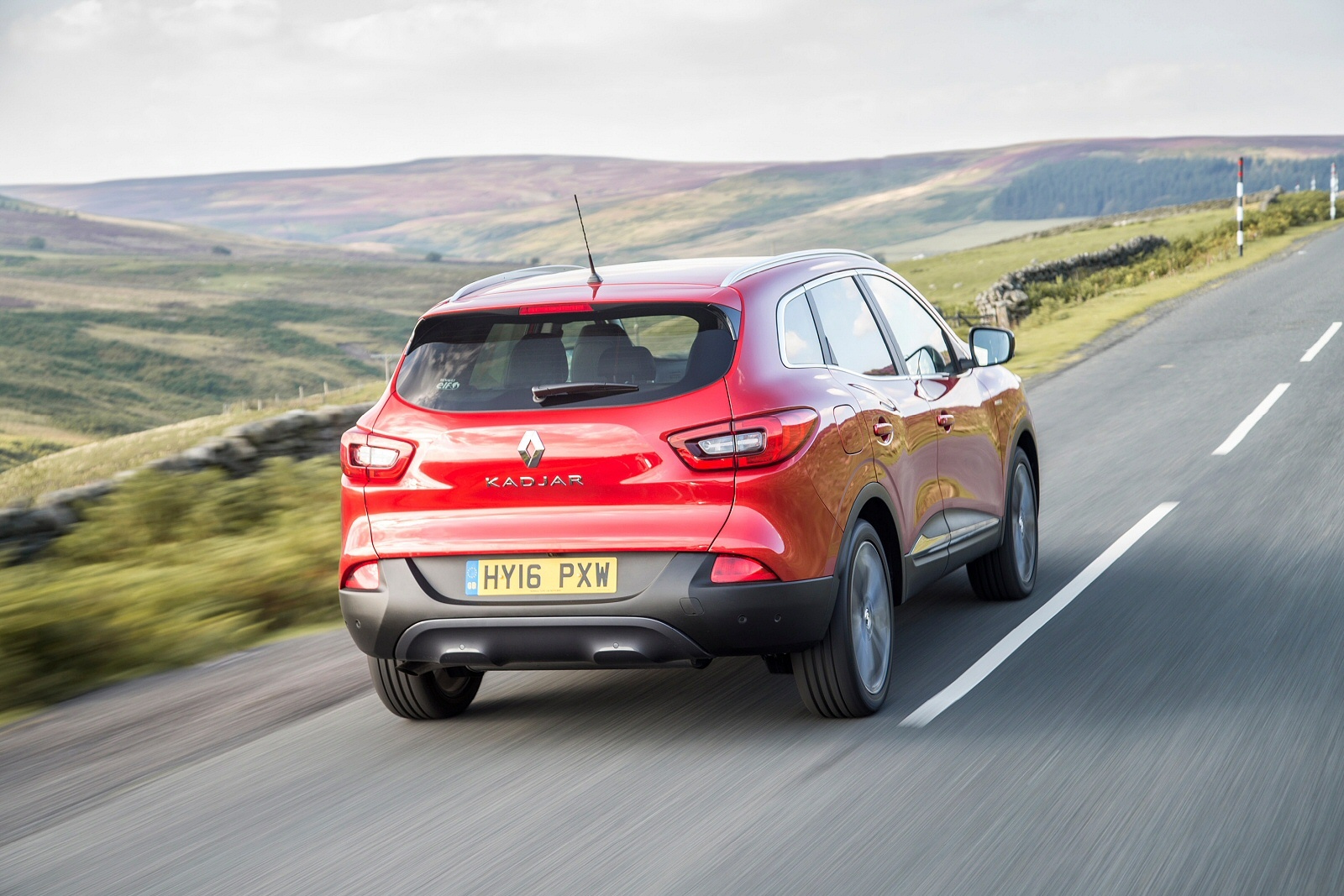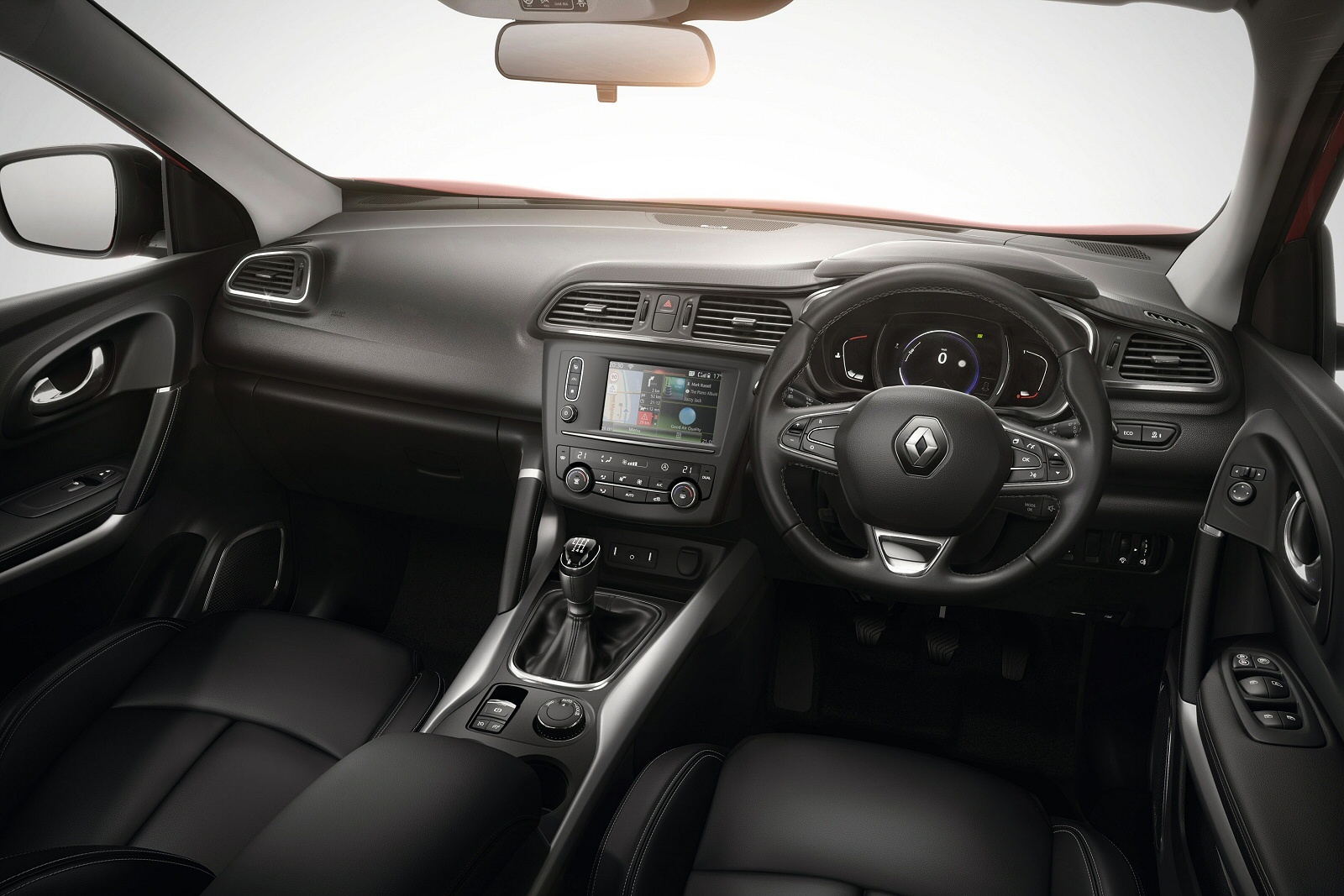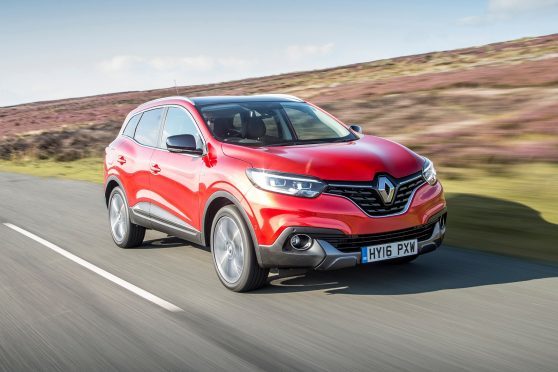The Renault Kadjar has proved to be a strong proposition for Renault in the family crossover market, firing a broadside at the likes of the Mazda CX-5, the Volkswagen Tiguan and the Hyundai Tucson.
It’s a good-looking thing, based on the same running gear as its alliance sibling, the Nissan Qashqai and offered in either front or all-wheel drive.
Surprise, surprise – the Kadjar looks for all the world like a scaled-up Captur, which in itself is no bad thing. There are the same deeply sculpted flanks and familiar Renault family face.
It’s much the same size as a Qashqai, as you’d expect, although the French proudly point out that’s it’s bigger in its exterior dimensions. The Kadjar is quite a bit larger than the Qashqai, at 4.45m long, 1.84m wide and is 1.6m high.
The fascia is neatly executed with decent materials, but there’s nothing about it that immediately smacks of Renault.
The Kadjar is a car that Renault has really big plans for. UK versions are built in Palencia in Spain, but Asian-spec models are the first Renault vehicles to be manufactured in China.
Pricing is pitched just above that of Renault’s smaller Captur crossover to a level that’s pretty comparable with the Nissan Qashqai this car is based upon. That means a starting price of around £18,000 and five trim levels – Expression+, Dynamique Nav, Dynamique S Nav, Signature Nav and Signature S Nav.
As we’ve said, the 1.5 and 1.6-litre diesel engines that feature in the Kadjar are the same as those used by the similar Qashqai – and, of course, get much the same excellent efficiency figures. The 1.5-litre dCi diesel unit is the engine to choose if you feel that fuel station pasties and chocolate bars are sabotaging your fitness regime. This gets 74.3 miles per gallon and 99g/km of CO2
– and the 1.6-litre diesel isn’t that much worse. Here, you get 113g/km and 65.7mpg if you go for a manual front-wheel drive version, with an equivalent four-wheel drive car registering 126g/km and 58.8mpg.

Go for the petrol 1.2-litre Tce 130 variant and you’ll manage 126g/km of CO
2
and 50.4mpg on the combined cycle.
The success of the Nissan Qashqai has been a phenomenon and it seems bizarre that partner Renault was for so long left out in the cold with no spin-off crossover vehicle of its own.
The Kadjar is a case of “better late than never” and while there is the chance that it will scavenge a few Nissan sales, Renault firmly believes that it’ll be sufficiently strong to purloin more than a few orders from Kia, Volkswagen and other makers of medium-sized crossovers.

We wouldn’t bet against it. Cars in this class are largely bought on styling and image and, wacky name aside, the Kadjar looks to have both of those things well accounted for.
It’s certainly a more confident, adventurous-looking thing than the Qashqai on which it’s based.
With Renault’s usual palette of strident paint finishes and slick personalisation options, if the marketing is right, the orders will come.
